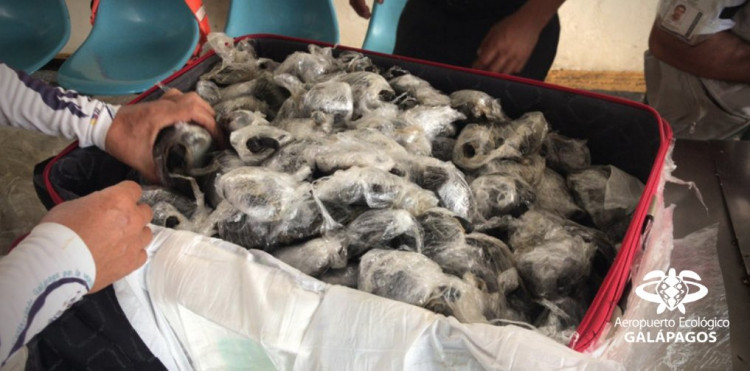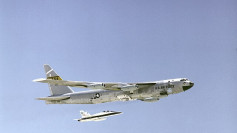Customs officials in Ecuador found 185 baby tortoises packed inside a suitcase being transported from the Galápagos Islands to the mainland with the reptiles were wrapped in plastic and discovered during a routine inspection at Baltra island's main airport.
Officials reported that ten of the baby tortoises had died.
According to a statement released by the airport, X-ray machines on Sunday found irregularities in a red suitcase that was said to be carrying souvenirs. When staff opened the suitcase, they discovered 185 young tortoises wrapped in plastic, including 10 of which had died.
The tortoises were no more than three months old, according to officials, and it was difficult to decide which island they had come from. Photos show that the tortoises had been wrapped in plastic. The smugglers most likely did this to immobilize the animals to avoid detection by authorities.
Ecuador's environment minister, Marcelo Mata, tweeted on Sunday afternoon that he categorically condemns "these crimes against wildlife and the natural heritage of Ecuadorians." He stated that the tortoises were captured in the wild and that the remaining ones are undergoing veterinary examinations.
As of Monday afternoon, no charges had been filed in connection with the suitcase as airport officials were waiting for national and environmental police to perform investigations, but the people who checked in the suitcase were detained for questioning, according to the airport's statement.
The Galápagos Islands are home to many tortoise species, including the archipelago's famous giant tortoises.
One of the most serious threats to the tortoises that live on the islands is illegal animal trafficking. According to the BBC, hatchling-sized juveniles will fetch more than $5,000 on the global exotic pet market.
Illegally trafficking fauna from the islands is punishable by one to three years in prison. The archipelago is a protected area noted for its diverse flora and fauna species.
Charles Darwin famously studied the endemic species of the islands, and his observations helped in the creation of his theory of evolution.






